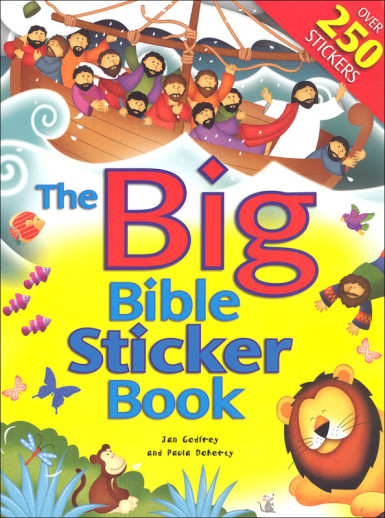We use cookies to make your experience better. To comply with the new e-Privacy directive, we need to ask for your consent to set the cookies. Learn more.
Big Bible Sticker Book
- Small parts. Not for children under 3 years.
There are over 30 stories and 250 stickers in this Bible storybook for young children. Stories begin with Creation and end after the resurrection of Jesus Christ. Each story is a two-page spread with plenty of room to add the stickers. The stories are short and the pages are colorful to keep young children engaged. Some stickers are for specific areas on the page while others are free form. This is a great resource for a young family or for use in a Sunday school classroom.
Children will interact with more than 30 Bible stories using the 250 included stickers! The Big Bible Sticker Book introduces little ones to favorite Bible stories while they exercise fine motor skills. Children will complete the colorful illustrations by placing corresponding stickers onto the appropriate pages, or they can use their imaginations and creatively place the stickers! Throughout the book, the Gospel is made clearfrom the creation of the world to the empty tomb!
Shift the maze walls and move your ghosts through open corridors on the board in search of treasures. Whoever reaches a treasure first can claim it, but the corridors close up quickly as the maze walls shift, so it can take a few turns to reach a goal. It takes both strategy and luck to collect the most treasures and win the game.
| Product Format: | Paperback |
|---|---|
| Grades: | PK-2 |
| Brand: | Concordia Publishing House |
| ISBN: | 9780758658128 |
| Length in Inches: | 11 |
| Width in Inches: | 8.25 |
| Height in Inches: | 0.25 |
| Weight in Pounds: | 0.8 |
Be the first to review this item
- Start typing and we'll see if it was already asked and answered.
- If there aren't already some matches, submit a new question.
- You'll get fast answers from customers who really own the item(s) and from our product experts. (About half the time you'll get an answer in under 2 hours!)
- Which items will best meet your needs
- What customers who own an item think of it
- How to use, fix, or take care of an item
- Product information
- General advice related to the types of products we sell
- Our store policies
For questions about an order you have placed, please contact customer support directly.












Need an activity to go along with the Bible Stories I am reading to my Sunday School Class
My 3 year old loves stickers...so this book looks great to help her love the Bible more.
looks like something I'd have fun doing with my granddaughter